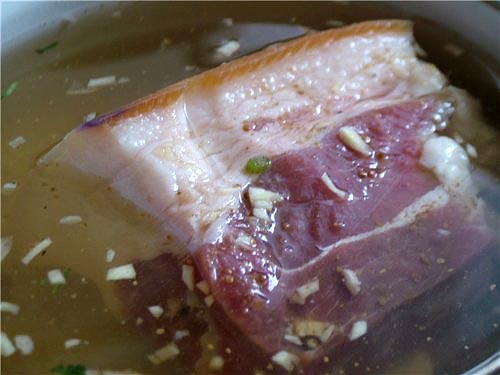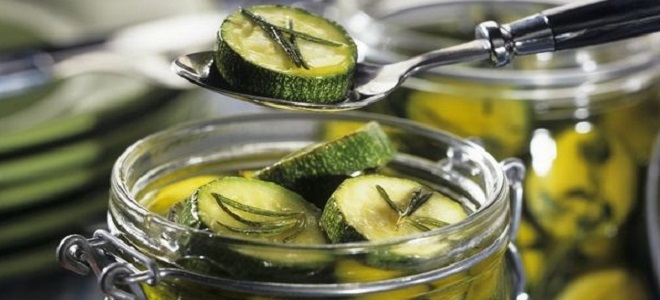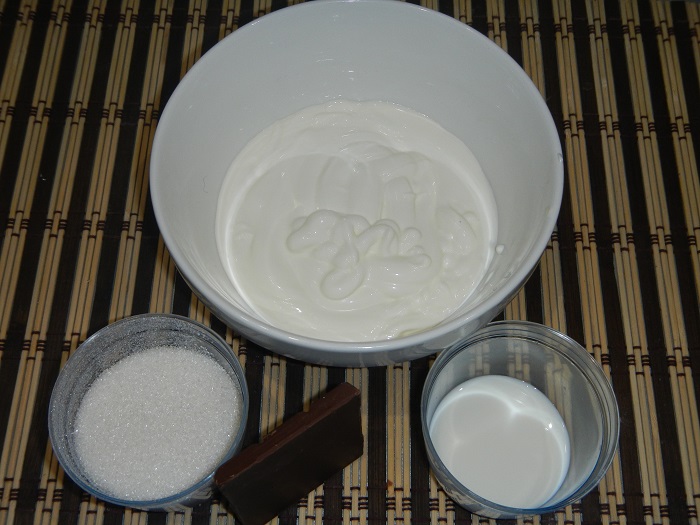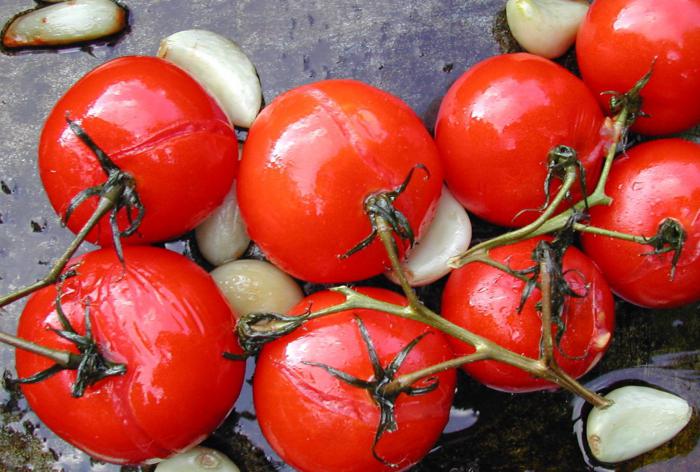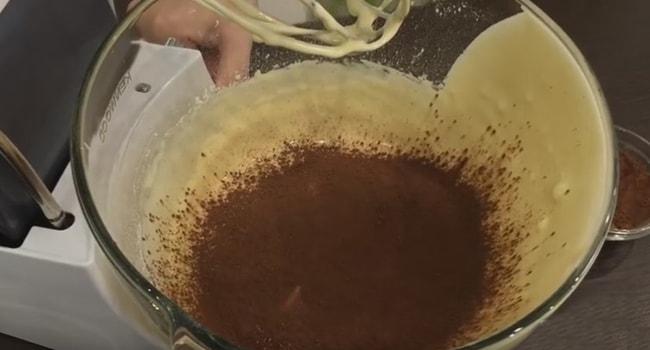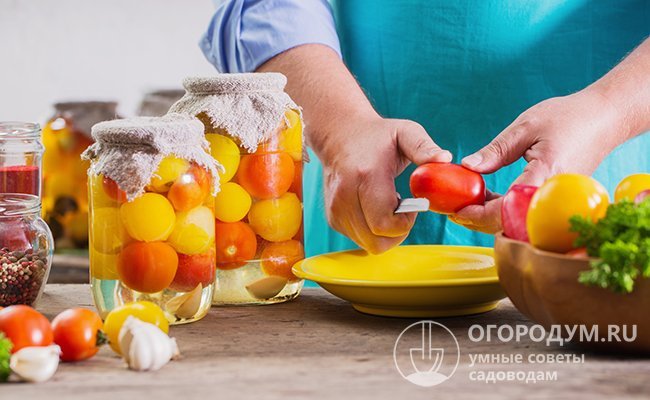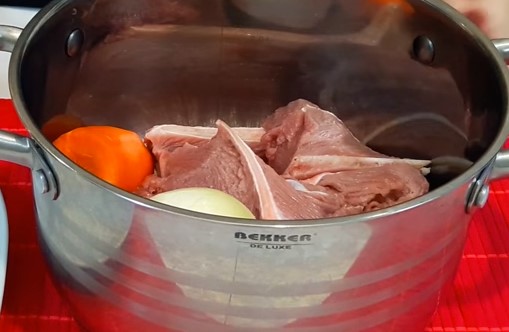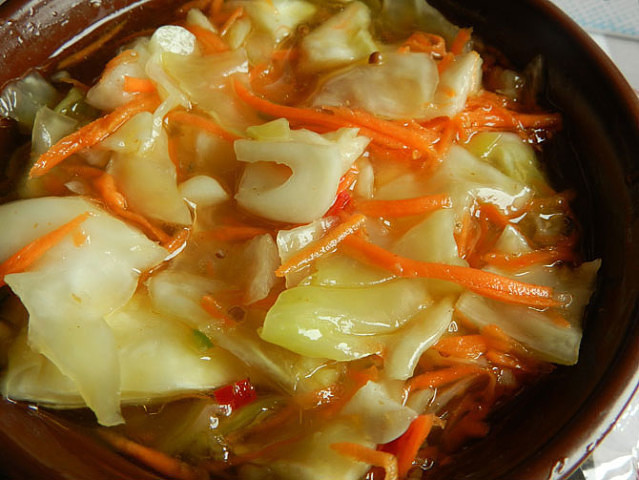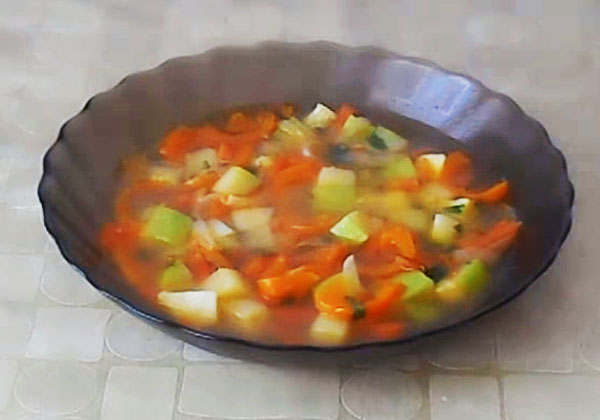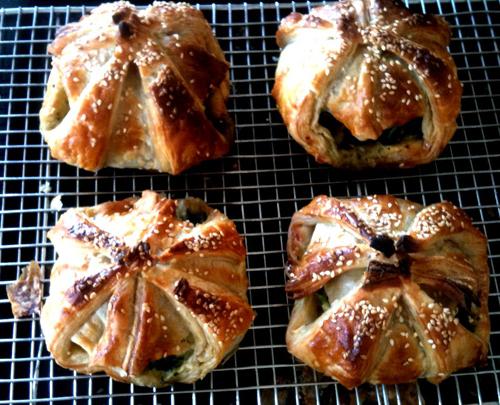The right recipes for brew for moonshine. What to put at home? Delicious apple mash: recipes, delicacies, secrets
Sugar moonshine is a classic of Russian distillery. She won love among many lovers of homemade alcohol. There are a huge number of recipes for making mash from sugar at home in which the proportions sometimes vary, but always the yield of moonshine is almost the same. Making homemade alcohol is warranted for several reasons. The first is the environmental friendliness of raw materials, sugar is a pure product and properly prepared moonshine does not cause poisoning and a strong hangover. The second is the cost of the product, making moonshine at home is much cheaper than buying store alcohol. About 1 liter comes from 1 kg of granulated sugar. finished drink with a strength of 40 degrees.
As a result, you will get decent alcohol and if it is ennobled by various methods, then it will not be inferior to expensive elite drinks. The easiest way for a beginner to “ferment” is to make a mash of sugar, and then get the distillate. How to prepare hoppy drinks correctly, what proportions to use, what utensils and how many ingredients to take, the entire cycle of obtaining moonshine is described in detail in this article.
To make the mash you will need: fermentation utensils, water, sugar, yeast, water trap, sugar meter, aquarium heater. The last three devices are optional, it is quite possible to do without them.
Capacity for mash. The main indicators when choosing dishes for fermentation are: volume, material of manufacture, tightness. For some types of mash, you still need a water trap that performs two functions: it provides carbon dioxide output and prevents oxygen from entering the brew.
 Capacity volume
for fermentation depends entirely on your needs. It must be borne in mind that the mash should fill no more than ¾ of the volume of the fermentation tank. Otherwise, there is a risk of throwing foam during fermentation to the outside.
Capacity volume
for fermentation depends entirely on your needs. It must be borne in mind that the mash should fill no more than ¾ of the volume of the fermentation tank. Otherwise, there is a risk of throwing foam during fermentation to the outside.
Material. The most preferred fermentation material is glass. Various bottles, glass jars. Food grade stainless steel can also be used. Plastic containers of various volumes are currently sold, the main thing is to make sure that it is suitable for food products. Often at home, aluminum utensils, milk jars, pans are used. It is very convenient if the tank has a drain valve, which will greatly facilitate the work.
Attention!
1. Be sure to thoroughly rinse all dishes with hot water with detergent before use, and then wipe well with a clean towel. The cleaner the dishes, the lower the risk of souring the mash, which can lead to an unpleasant taste of moonshine.
2. Before pouring water, place the fermentation tank on a stand with a height of 0.5 meters. Firstly, it will improve heat exchange and secondly, it will be easier later to drain the fermented mash.
 Which yeast to choose.
For the preparation of moonshine, it is advisable to take special alcoholic yeast. The use of alcoholic yeast gives a higher yield of alcohol during fermentation, better organoleptic. The instructions always say how much sugar a pack is designed for. The only minus of alcoholic yeast is difficult to find and a rather high price. But instead of alcohol, suitable dry or pressed, Belarusian ones will do. Dry yeast is taken from the calculation 20 grams per kilogram of sugar. Proportions for pressed: 100 grams per 1 kg of sugar.
Which yeast to choose.
For the preparation of moonshine, it is advisable to take special alcoholic yeast. The use of alcoholic yeast gives a higher yield of alcohol during fermentation, better organoleptic. The instructions always say how much sugar a pack is designed for. The only minus of alcoholic yeast is difficult to find and a rather high price. But instead of alcohol, suitable dry or pressed, Belarusian ones will do. Dry yeast is taken from the calculation 20 grams per kilogram of sugar. Proportions for pressed: 100 grams per 1 kg of sugar.
The addition of dry yeast makes the brew not worse in quality, and sometimes even better. Raw pressed give the drink a too fusky flavor, and the use of dry gives a rapid fermentation and abundant foaming. Another plus of dry and alcoholic yeast is its long shelf life.
What kind of water to use. Good, correct water is the basis of the taste of the final product. To prepare sugar mash, water should be used that is well purified, odorless, tasteless, and without additives. The most suitable water is spring water or bottled water. If tap water is used, then before use it is recommended to stand for 1-2 days, and then gently drain with a hose. Hydro module: per 1 kg. sugar - 4 liters of water.
The classic recipe for moonshine from sugar
 According to this recipe, sugar and yeast mash is prepared. The yield of purified moonshine is approximately 5.5 liters after the second fractional distillation, the spirituality of the drink is 45 percent.
According to this recipe, sugar and yeast mash is prepared. The yield of purified moonshine is approximately 5.5 liters after the second fractional distillation, the spirituality of the drink is 45 percent.
Ingredients:
- Sugar - 5kg;
- Dry yeast - 100 gr;
- Spring water - 20 liters.
Wort preparation:
- Pour warm water 25-30 ° into the container where fermentation will take place, add sugar. Stir the mixture thoroughly until sugar is completely dissolved. Recently, complaints of sugar have often been received - fermenting poorly, not sweet, etc. To avoid embarrassment, you can use the device - a sugar meter. A sugar meter shows the density of sugar in a must. For normal mash, the sugar meter should show a density of 18-22%.
- In a separate bowl, dilute, ferment the yeast. Pour 300 ml of water at 28 °, add a tablespoon of sugar, stir, add dry yeast, dilute, after about 10-15 minutes, when the yeast rises, add them to the fermentation tank. To reduce foaming during fermentation, it is recommended to add the Saf-Moment yeast - 11 g. If you use pressed yeast in the recipe, then you need to take them 500 gr.
- For normal operation, yeast other than sugar and water top dressing required . This is not a mandatory moment, but desirable, it allows you to speed up the process. There are special chemical dressings with phosphorus and nitrogen, there are the usual household ways to “cheer up” the mash. First of all, this is brown bread, for 20 liters of mash, half a loaf will be enough. It is also recommended to use berries, grapes, raspberries, strawberries at the rate of 15-20 pieces per 20 liters as top dressing.
- It is not necessary to set a water trap for sugar mash, it is enough to tightly close the lid, and if the neck is small, then cover it with several layers of gauze.
Fermentation. In order for the wort to roam well, it is necessary to ensure a favorable temperature regime. The ideal temperature for fermentation is considered to be 28-31 ° C. It can be slightly lower, but in no case higher than 35 °, at this temperature the yeast will die and the mash will not ferment.
 To provide this mode allows a warm room or the use of an aquarium heater. Heaters come in various capacities from 50 watts or more, which one you need to choose depends on the capacity of the container. For 40 liters of mash, 100 watts is enough, provided that it is indoors. The convenience of the heater is that it maintains a stable temperature with the built-in thermostat. Set 28 ° on the controller and lower it into the fermentation tank, connect it to the power supply, the temperature will stand and be maintained automatically.
To provide this mode allows a warm room or the use of an aquarium heater. Heaters come in various capacities from 50 watts or more, which one you need to choose depends on the capacity of the container. For 40 liters of mash, 100 watts is enough, provided that it is indoors. The convenience of the heater is that it maintains a stable temperature with the built-in thermostat. Set 28 ° on the controller and lower it into the fermentation tank, connect it to the power supply, the temperature will stand and be maintained automatically.
With proper temperature maintenance, the presence of top dressing, fermentation lasts 7-14 days. Once a day, it is necessary to mix the sugar mash well to remove carbon dioxide.
How to determine the readiness of the mash:
- Carbon dioxide ceased to stand out, the water trap calmed down, stopped gurgling. No ascending bubbles are visible on the surface. Light a match over a mash, if it burns, then gas does not stand out.
- Stratification is present in the braga, the top layer has become light, the yeast partially precipitated.
- The taste of mash has become bitter, no sweets are felt.
- In the smell and taste of mash there is a clear aroma of alcohol.
- The most accurate method is to use a sugar meter. If the wort is fermented, then the sugar meter will show “0”.
Lightening and cleaning mash
 Lightening and degassing must be done in order to improve the final taste of moonshine. Degassing is the process of removing carbon dioxide residues. For this, the wort needs to be heated to 55 ° C, live yeast dies at this temperature. One of the easiest ways to lighten the mash with cold, if the temperature allows. Take the mash for a day or two to the cold -5 ° or + 5 ° and it will naturally lighten. The yeast will fall to the bottom, after which the mash should be decanted, that is, carefully drained from the sediment using a thin silicone or PVC hose.
Lightening and degassing must be done in order to improve the final taste of moonshine. Degassing is the process of removing carbon dioxide residues. For this, the wort needs to be heated to 55 ° C, live yeast dies at this temperature. One of the easiest ways to lighten the mash with cold, if the temperature allows. Take the mash for a day or two to the cold -5 ° or + 5 ° and it will naturally lighten. The yeast will fall to the bottom, after which the mash should be decanted, that is, carefully drained from the sediment using a thin silicone or PVC hose.
You can speed up the process and lighten the mash in other faster ways using bentonite, gelatin or protein. For sugar mash, bentonite is most often used for clarification. Bentonite is a natural product, natural white clay. For cleaning, the Pi-Pi-Bent brand is suitable, the main thing is that there would be no flavors in it. For 20 liters of mash, 2-3 tablespoons of clay are enough. Before use, it must be dissolved in a glass of warm water and mix thoroughly. Then pour the mixture into the mash and mix. After 12-24 hours, the mash becomes transparent, it remains only to drain it from the sediment.
Getting moonshine from mash
 The first distillation.
Pour clarified, cleaned mash into a cube of moonshine. And overtake at high power. The heads and tails at the first distillation need not be selected. The first time raw is taken almost to the water, so that there would be 5-7 degrees in the stream.
The first distillation.
Pour clarified, cleaned mash into a cube of moonshine. And overtake at high power. The heads and tails at the first distillation need not be selected. The first time raw is taken almost to the water, so that there would be 5-7 degrees in the stream.
Intermediate cleaning. The obtained moonshine before the second fractional distillation must be cleaned of harmful impurities. There are many proven methods for this. The most popular method for winemakers is coal cleaning. There is a way to clean oil and others.
- . You can clean the raw material using a charcoal filter or pour raw coal on it. For the first method, you need to make a filter from a plastic bottle. Cut the bottom of the bottle a, drill several holes in the cork. Insert a layer of cotton wool tightly into the cork, screw it onto the bottle. Pour coal BAU or KAU per 1 liter of moonshine 10-12 grams of coal. Pass moonshine through the filter. In the second method, pour coal directly into the alcohol raw. Grind the coal beforehand, add 50 g per liter. Stir thoroughly, insist a day. Then filter the moonshine. Coal absorbs up to 80% of sivuhi and various esters.
- Cleaning moonshine with sunflower oil. For cleaning, you need to take refined sunflower oil. Dilute the moonshine to 15-20 degrees of strength, add 20 grams of oil per liter of raw alcohol. Stir well three times at intervals of 1-3 minutes. Leave for a day to settle, drain with a tube without touching the upper oily layer. Strain through a cotton filter. For cleaning efficiency, these two methods can be combined. First oil, then charcoal.
Fractional distillation. Pour purified, diluted moonshine from sugar up to 20 degrees into the distillation cube of the moonshine. Proceed to the distillation with the selection of fractions. At low power, select the head fraction. The heads are selected dropwise, the selection speed is 1-2 drops per second, such a slow intake of liquid allows you to get rid of the toxic first fractions qualitatively. The number of goals is selected 50 ml from each kilogram of sugar.
Then change the receiving capacity and select the drinking fraction "body". The body is selected up to 45-50 degrees in the stream. Then the tails will go, to select them or not is your business. Typically, the tail fraction is added to the mash before the distillation, in order to increase the yield of moonshine.
Finishing and enrichment of moonshine
 As a result, you will get moonshine from sugar with a strength of about 65 degrees. Such a fortress is too high for drinking, so it must be diluted with clean bottled water to 40-45 degrees. To do this correctly, a special calculator will help. To soften the taste, you can heat the moonshine on the stove to 70 degrees, while unnecessary substances evaporate from it. Pour the diluted distillate into bottles, give it a “rest in the glass” for 2-3 days, or rather let it stand for a week and you can start tasting.
As a result, you will get moonshine from sugar with a strength of about 65 degrees. Such a fortress is too high for drinking, so it must be diluted with clean bottled water to 40-45 degrees. To do this correctly, a special calculator will help. To soften the taste, you can heat the moonshine on the stove to 70 degrees, while unnecessary substances evaporate from it. Pour the diluted distillate into bottles, give it a “rest in the glass” for 2-3 days, or rather let it stand for a week and you can start tasting.
Sugar moonshine has a more neutral taste compared to grain and fruit distillates. Therefore, at home, it is more used for the preparation of various liquors to insist on it berries and fruits. Make another delicious homemade alcohol.
Catalog menu
Long-standing moonshiners know many recipes for making mash. Basically, recipes depend on the raw materials that you have at hand. For example, winemakers remain in a large amount of pulp, squeeze. Mash is transferred grapes intended for use in the preparation of wine. Squeezed berries sink to the bottom, the wine is gently poured into another container. Sugar, yeast, water is added there. It remains to wait for the readiness of the mash and drive it through the moonshine still or mini-alcohol factory. As a result, we get the famous chacha, alcohol or brandy. What you wish. Moreover, now isabella is ripening in large numbers in central Russia.
Cooking mash
We will consider the simplest example of cooking mash at home from improvised means. We collect 14 liters of water. It is preferable to spring or key, you can tap, which previously must be defended, cleaned of impurities using a filter. Add 3 kg of regular refined sugar, 200 g. alcohol or wine yeast. It is undesirable to use baking yeast for such a delicate matter. The quality of the wort depends on how you pick up the three elements. Or, as the old-timers of production say, a must. From 14 liters of mash, you can get: 3 liters of strong moonshine or 1.5 liters of alcohol 96%.
Pour 1-2 liters of water and heat it to a temperature slightly above room temperature. In no case do not heat or use water above 30 degrees, since yeast consisting of unicellular mushrooms can die in it. Add yeast to warm water. Mix well. Yeast should completely dissolve. Put the jar in a warm place. Yeast should "fit."
Add sugar to the remaining water, stirring the water thoroughly to achieve complete dissolution. To quickly dissolve sugar in water and make the process easier, transfer half of the remaining water to a separate container. Heat the remaining water to 50 degrees, dissolve sugar in heated water and mix with cast water. Thus, you will lower the average water temperature from 50 degrees to 30 degrees. Pour water into a separate container. To do this, you can use glass 20 liter bottles. Never use plastic or galvanized containers. During fermentation, the walls of the vessel from contact with the degradation can be oxidized, releasing harmful substances and impurities during the oxidation process. After about 1 hour, add prepared, sweet water to the “matching” yeast.
Raw material for mash is ready !!! Put the bottle in a warm place. Put a medical glove or balloon on the neck. Sugar under the influence of yeast begins to decompose, releasing carbon dioxide and ethyl alcohol. The temperature of the mash is rising. Carbon dioxide goes into the glove, inflating it. The inflated glove prevents air from entering the bottle. Instead of gloves, you can use a wine lock. To do this, drill a hole in the lid. Insert the tube into the hole and seal all the cracks securely with plasticine or sealant. Pour water into the stopper.
After a few days, foam begins to form in the bottle. The main fermentation begins. With the release of gas bubbles.
In the final stage, which occurs after 10-12 days, the foam settles, the emission of carbon dioxide stops. The liquid inside the bottle brightens. Braga is ready.
It remains to choose the time. Using a hose, pour the mash without precipitation, which during fermentation formed at the bottom of the bottle, into the distillation tank. Now you can drive out alcohol or moonshine depending on your mood.
Moonshine or alcohol
For our part, we recommend that you use an innovative, compact moonshine. The principle of cooling alcohol is borrowed from the refrigerator with the only difference being that freon uses freon as a cooler, and a gas or electric heat source is used as a compressor. To get the result, you need to turn the alcohol pair into a liquid. A primitive coil requires a large amount of water. Our innovative brewer Brandy 1000 can be lowered into a bucket of cold water. Systematically check the temperature of the water. If the water has become warm, you can slightly drain the water from the bucket and add a couple of liters of cold water. Vapors of alcohols resulting from boiling in a closed container for distillation under pressure are fed through the tube to an innovative cooler. Steam escapes from the thin tube into the cooler, which is wider than the inlet tube, transfers heat through thin walls to the water. The obtained moonshine through the outlet through the tube is fed and accumulated in the bank.
The Bee Brandy 1000 moonshine still is a rejection of the past in favor of a quality future. No water connection required. Compact high performance chiller. If you do not need high quality, and you value the reliability and speed of getting a drink, the Bee Brandy 1000 moonshine still is the right solution for you.
You can also buy a package of mini-distillery "Bee". And already at the stage of sweep to get high-quality alcohol. After diluting the alcohol in water and adding concentrates of flavors identical to natural ones, you will get excellent spirits. Cognac, rum, home-made whiskey, it is saving the family budget and a new quality and taste of the usual product. Besides  the package mini distillery "Bee" we have enough mini-distilleries available for different capacities. We are able to satisfy the most demanding customers.
the package mini distillery "Bee" we have enough mini-distilleries available for different capacities. We are able to satisfy the most demanding customers.
The first attempts to make good moonshine at home are not always successful. It would seem that this is complicated: I mixed sugar, water and yeast, waited until the mash stopped fermenting and passed through the apparatus. But the result for some reason does not please ...
Let's check if we are doing everything right.
What determines the quality of the drink?
Regardless of the original product, you can always get a good result if:
- Use quality raw materials.
There are a lot of recipes for mash, ranging from sugar to exotic fruits. From rotten, moldy products we get the same mash and moonshine with an extraneous taste. Why do we need additional cleaning costs?
- Observe certain proportions when cooking mash.
Fermentation ends when the yeast processes all the sugar. And if there are a lot of them or sugar is not enough? So much for the “wrong” mash, which doesn’t even reach the condition.
- Follow the rules for distilling mash into moonshine.
The taste and quality of the drink depend on this. If everything is done correctly, to separate the "heads" and tails, then the next paragraph will not be required.
- Be able to clean and refine the final product.
This stage is for advanced winemakers. Tinctures, liquors, “cognac” and “whiskey” - something that you can’t try with some craftsmen. And it turns out pretty well!
How to put a mash?
From this begins the process of obtaining moonshine. The most popular recipe for mash is water, sugar, yeast in certain proportions.
Let's see how this is done in practice.

There will be an opportunity and desire, put the mash in several containers with different yeast and compare the result.
Classic proportions
 The specific amount of ingredients is calculated for each case separately, depending on the volume of the fermentation tank. For 1 kg of sugar, 100 g of ordinary yeast or 20 g of dry yeast are taken. As for water, the recommendations are different: from 3 to 5 liters. On the quality of the mash, this is reflected imperceptibly, but it matters if the capacity is small. The tank cannot be filled more than ¾, the mash is playing and an “escape” is possible. Therefore, they calculate the volume of water and the amount of sugar, respectively, capacity.
The specific amount of ingredients is calculated for each case separately, depending on the volume of the fermentation tank. For 1 kg of sugar, 100 g of ordinary yeast or 20 g of dry yeast are taken. As for water, the recommendations are different: from 3 to 5 liters. On the quality of the mash, this is reflected imperceptibly, but it matters if the capacity is small. The tank cannot be filled more than ¾, the mash is playing and an “escape” is possible. Therefore, they calculate the volume of water and the amount of sugar, respectively, capacity.
In order not to start packing started, it is convenient to make a calculation for a 5-pound bag of sugar. You will need a pack (100 g) Saf-Levyur or 500 g of ordinary pressed yeast. The required volume of water is about 20 liters.
Cooking mash
We prepare the container in which the mash will stand. A 25 liter wide-necked plastic canister will satisfy us completely. It must be washed, check the tightness of the lid and prepare a water lock.
We measure water into a large pot, pour sugar and heat, stirring, until completely dissolved. Pour the syrup into the canister and let cool to 30 degrees. At this time, pour warm water into a separate pan and put the yeast there. After about 10 minutes, you will see how active they are, they can be added to the syrup that has cooled down to the desired temperature.
Close the lid, put the shutter (or glove).
The first time of the mash requires attention. A lot of foam can stand out, a water seal will clog, the glove will burst. Keep plain cookies ready, crush one between your fingers and sprinkle crumbs on the foam - it will subside and will no longer form.
The readiness of the mash is simple to determine. The water lock stopped gurgling, the glove fell, a lit match burns at the open neck of the canister - these are signs of the completion of the fermentation process. Braga is ready for distillation.
How to make mash from jam?
No, no, and your hostess will fail in making jam. Fermented, sugared, simply stale from past years. Do not throw away?
Making mash from jam is no more difficult than from sugar. It is harder to find a large amount of "inedible" jam. For the sake of this, it is worth contacting relatives and friends, acquaintances and neighbors: each will have one or two banks.
The composition of the jam does not matter: berries, fruits, jam, jam - everything will work.

Some useful tips
- Get some good equipment.
- A factory-made moonshine made from stainless steel with a sufficient volume of distillation cube (respectively a fermentation tank) will save you from a lot of trouble and ensure the proper quality of the drink. Well, if it is with a thermometer and a steam tank.
- A water lock is not a luxury, but a convenience in work.
- When putting the mash, observe the temperature regime. 25-35 degrees - the optimum temperature for yeast. At high temperature, the yeast dies, at low - fall asleep.
- Observe the proportions of sugar. Excess sugar increases the alcohol content and leads to death of the yeast.
- Do the distillation of mash fractionally: slowly drop by drop “heads” –50 ml from each kg of sugar (used for technical needs). Then the rate of selection of alcohol can be increased. Below 40 ° - these are the “tails” (added to the next wash).
- Observe distillation safety precautions.
Found a mistake? Select it and press Shift + Enter or
Cooking mash is a process that does not forgive mistakes. Experienced moonshiners have many secrets on how to prevent mistakes at this stage, thereby spoiling the taste of the final product. Today we will talk about how to make mash for moonshine, having examined in detail each stage, its significance, and optimization methods to obtain a high-quality result.
photo from the site http://xcook.info
How to make mash for moonshine: we understand the essence of the process
The fact that fuss with yeast and large bottles can not be avoided, everyone knows who at least once brewed moonshine. Understanding the reactions that take place at this time helps to create optimal conditions and prevent mistakes that nullify all efforts. The goal of making mash, as you might guess, is to initiate fluid fermentation, during which the following biochemical reactions occur:
- Propagation of yeast fungi. The process occurs in the presence of oxygen, at a temperature of 23-28 ° C and the presence of nutrients.
- If products containing complex carbohydrates are used for the manufacture, a hydrolysis reaction occurs, with their splitting to glucose.
- When anaerobic conditions are created (without oxygen access) in the process of life, the yeast consumes glucose, breaking it down into ethyl alcohol and carbon dioxide, the active release of which is accompanied by the reaction.
- Termination of fermentation and death of yeast. This happens when nutrients (sugar) are running out and the alcohol concentration reaches critical values \u200b\u200bfor microorganisms. With the right proportions, these factors coincide in time.

photo from the site http://www.chevy-niva.ru
Most often, to solve the question of what is better to make mash for moonshine, sugar is used as a source of carbohydrates, as the simplest option. But to give moonshine taste shades or use illiquid products, other carbohydrate-containing options can be used:
- Honey, starch, cereals (rye, barley, wheat) are quite suitable for the manufacture of alcohol.
- Candied, fermented or simply stagnant jam and compotes should not be thrown away.
- Spoiled, thawed, or expired sweets also serve as a source of sucrose.
- Carbohydrate-rich vegetables like potatoes, beets or pumpkin are widely used in home-brewing.
- Fruits give the final product a subtle flavor. The usual plums, cherries, apples, or exotic pineapples and feijoa are successfully used by experienced moonshiners.

photo from the site http://www.aif.ru
You can’t do without sugar
It is impossible to achieve the required glucose concentration only with fruits or vegetables, therefore, recipes always use their combination with sugar.
How to make a good brew for moonshine: a recipe and selection of ingredients
Technological aspects are described for the simplest recipe using sugar. But thanks to some subtleties, it becomes possible to reduce the cooking time and improve the organoleptic qualities of the final product.
The recipe is designed to receive after distillation 5 liters of drink, strength 40⁰:
- water - 24 l;
- yeast - 600 g (pressed) or 120 g (dry);
- sugar - 6 kg;
- citric acid - 1 sachet (25 g).
Keep in mind that a kilogram of granulated sugar has a volume of about 630 ml, depending on humidity. Thus, the indicated number of products will occupy a volume of about 28-28.5 liters. Prepare a container of at least 33 L to leave room for foaming that will accompany the release of carbon dioxide.

Choose water
This point is often omitted during cooking, especially by people who make moonshine for sale, and water comes from the tap directly. In fact, the characteristics of this component largely determine the effectiveness of fermentation and the taste of the finished drink. Pay attention to the following options:
- Organoleptic properties. It is unacceptable to use water that has extraneous smacks or smells; nobody has canceled the standard hygiene requirements.
- Hardness determined by the content of mineral salts. Excessively hard water inhibits fermentation, but a certain amount of minerals is necessary for the life of the yeast, so boiled or distilled water will not work.
- Oxygen content. Oxygen present in raw water is used in the process of converting sugars to alcohol, so pre-boiling makes the water unsuitable for brewing.
- Chlorine content. Centralized water supply uses chlorination for disinfection, which complicates the development of microorganisms, including yeast.

photo from the site http://lite.35photo.ru
Naturally, before making the brew for moonshine, no one gives water for analysis, using the one that probably meets the above requirements:
- well;
- spring;
- filtered tap water;
- piped water.
In the case of water sedimentation, before use it is drained from the precipitate using a flexible tube, leaving a couple of centimeters at the bottom of the tank untouched.
Pick yeast
The strength of the mash depends on the type of yeast used, which will be obtained in the end, and, therefore, the yield of finished moonshine. This is determined by the concentration of alcohol, upon reaching which the yeast lose activity:
- Wild yeast is the most demanding, and their vital activity is inhibited even at an 11-degree fortress.
- Alcoholic yeast - created specifically for the production of alcohol, and withstand 18% concentration of ethyl alcohol. When deciding how to make a strong brew, the choice is to stop at this form.
- Bakery - used as an option that is easiest to find on sale, maintaining activity up to a 14-degree fortress.

photo from http://samogonka.org
Relying on the integrity of the manufacturer is not worth it, especially if its products are used by you for the first time. In order not to regret the kilograms of sugar spent in vain, before making a brew for moonshine, check the viability of a small amount of purchased yeast, diluting them in warm sweet water. If foam appears after 20-25 minutes, then you can start the whole batch.
How to make mash at home: step by step instructions
First of all, it is necessary to plan production volumes in order to prepare a suitable container for fermentation. After distillation, each kilogram of sugar spent will produce 1-1.2 l of 40⁰ drink, but in practice the real volume always turns out to be 10-12% less than the calculated one.
Preparation of invert syrup

photo from ru.pinterest.com/
Before making the brew for moonshine, it is advisable to invert sugar to convert disaccharides to monosaccharides. This speeds up the fermentation, as the wort will contain glucose, which the yeast can use without additional chemical reactions. In addition, heating is a disinfecting measure that destroys the microorganisms present in the sugar, which may become the culprit of souring the mash.
- In a large container, heat 3 l of water almost to a boil.
- Reduce heat and pour 6 kg of sugar, stir until smooth.
- Bring to a boil and cook over low heat for 10 minutes, periodically removing the foam.
- Pour 25 g of citric acid slowly and carefully. The syrup will actively foam, make sure not to run away.
- Cook over low heat, under the lid for 1 hour.
This stage is one of the key in resolving the question of “how to make a good brew?”. When using inverted syrup, alcohol is soft, without extraneous flavors. But in general, the step is optional, and if you decide to skip it, just dissolve the sugar in warm water. In the fermentation tank, mix the prepared syrup (or sugar) and 24 liters of water. The optimum temperature of the mixture before introducing yeast is 27-30 ° C.
Yeast activation

photo from the site http://brotgost.blogspot.com
Before use, it is advisable to activate (scatter) the yeast in order to start the production of ethanol faster, especially since it does not take a lot of time:
- In a small amount of warm sugar solution, dissolve the entire serving of yeast. Pressed yeast should be kneaded, and dry yeast just pour into it.
- Wrap the bottle and put in a warm place.
- After 20-30 minutes foam will rise on the surface, which means that the process is started, and yeast can be added to the syrup.
If you use baker's yeast, foaming will be more intense. To prevent a liquid with a specific odor overflowing, crumble one purchased cookie into it or add 2-3 tbsp. vegetable oil.
Feeding

photo from the site http://www.kakprosto.ru
If you are preparing fruit or grain mash, then this step is not necessary, since there are enough nutrients in the raw materials. But if only sugar is used in the recipe, it is necessary to supplement the solution with mineral substances, the source of which can serve as:
- Nitrogen-phosphorus fertilizers (1 tsp per kilogram of sugar) or ammonia (0.5 g per liter). Chemical top dressing gives a pronounced effect, but due to inorganicity it is used, as a rule, only for home brewing for sale.
- On a 30-liter bottle, folk craftsmen recommend adding 1 loaf of brown bread, or 250 g of tomato paste, or 0.5 cups of freshly squeezed fruit juice, or 20-30 crushed fresh berries.
- Malt is an organic and effective nutritional option. For 20 liters of mash, 0.5 kg of ground malt will be required, which should be boiled in syrup for 3-5 minutes.
Fermentation

photo from the site http://magnovar.ru/
The duration of this stage is from 3 to 10 days, and depends on many factors: temperature conditions, the correct ratio of ingredients, the quality of the products used. The average duration of fermentation is 4-6 days.
- Install a water seal that will not allow oxygen to enter, but will drain carbon dioxide from the bottle.
- Move the bottle to a warm place (optimally - 26-28 ° C), or wrap it in warm blankets. The most responsible moonshiners install aquarium heaters that maintain the desired temperature.
- When using large containers, overheating is possible due to the heat generated by the yeast. In this case, the bottle will have to be cooled.
- Shake the mash a couple of times a day without removing the water seal, this will accelerate the removal of carbon dioxide, which interferes with the development of yeast.

photo from the site http://tonnasamogona.ru
How to make mash: we determine the willingness
The suitability of the product for distillation is determined by the presence of 2-3 signs from the following list:
- Lack of sweets. The bitter taste suggests that not all sugar is used by yeast.
- Gas production stop. When using a water lock, it stops gurgling, and if the glove was put on the bottle, it is blown away.
- The clarification of the liquid began, and at the bottom a precipitate formed from dead yeast.
- Foaming and hissing stopped.
- There was a clear alcohol smell.
- The match at the surface of the mash continues to burn.

photo from ru.sputnik.kg
Please note that if we make mash for moonshine, and with obvious signs of the cessation of fermentation, the sweet taste is preserved, then one of the following errors was made:
- The percentage of alcohol has already exceeded the value at which the vital activity of the yeast is inhibited, and not all of the sugar has been consumed. This means that the type of yeast used in the recipe contains too much sugar, which is corrected by adding water.
- Adverse temperature conditions. When the temperature drops below + 18 ° C, the development of yeast slows down until it stops. Before you make mash at home, take care of a warm place for its fermentation.
Lightening: the last step to distillation

photo from the site http://forum.homedistiller.ru
The final step in the process, called “How to Make Mash,” is lightening. This is done to remove organic impurities that will burn in a distillation cube, giving moonshine an unpleasant odor. For clarification, one of the following methods is used:
- cool the container to 3-5 ° C;
- add a solution of bentonite, and withstand 1 day;
- add gelatin swollen in cold water, and stand for 2-3 days.
To clarify the mash, some moonshiners use citric acid, heated to 50 ° C, potassium permanganate and even hibiscus tea. Others do without lightening at all, simply draining the liquid from the yeast sediment through a flexible tube.

photo from the site http://trip-point.ru
The information given on how to make the mash properly is far from complete. For a detailed description of each step, see the other materials in this section.
Most people, hearing the word "mash" or "mash", squeamishly wrinkle their noses. For many, it is associated with a semi-finished product with an unpleasant odor, which is used for the further manufacture of moonshine. However, in fact it is a completely independent drink. Braga is suitable for consumption and has a pronounced taste of an alcoholic drink, quenching thirst, and a weak heady effect.
Drink mash It is a full-fledged product without the distillation process, but this does not mean that each prepared drink will taste good. The taste of the drink is answered by its ingredients. A wide variety of juices, berries, fruits, as well as honey and compote can come in handy.
Homemade Mash Recipes
You need to know that a tasty mash is obtained by observing the correct proportions of water, yeast and sugar. The drink will be ready after a period of fermentation, which can take from several hours to two to three weeks, given the composition. Observe the thermal conditions (25–30 C).
Honey mash
The most enjoyable beer brew is preparing from juice, jam or honey. Mead is a drink of our ancestors. Legends were written about its benefits and they were written in many ancient sources. Despite the heady effect, both children and adults drank it without exception. To prepare mead you will need:
- 300 grams of honey;
- 2 liters of water;
- 5 grams of hops;
- one teaspoon of yeast;
- nutmeg.
 According to the recipe for mash for drinking, we prepare a drink in the following sequence: in boiling water you need to add honey and dissolve. Continue to boil until the foam ceases to form (5-7 minutes). Foam should be removed. Before removing the container with mash from the heat, add nutmeg and hops. After the drink has cooled to 25-30 C, mix the yeast and leave it warm for 5 days. You can make yeast yeast instead of dry yeast and use it for mash. To do this, you need to dissolve the dry yeast in warm water and wait for the fermentation reaction.
According to the recipe for mash for drinking, we prepare a drink in the following sequence: in boiling water you need to add honey and dissolve. Continue to boil until the foam ceases to form (5-7 minutes). Foam should be removed. Before removing the container with mash from the heat, add nutmeg and hops. After the drink has cooled to 25-30 C, mix the yeast and leave it warm for 5 days. You can make yeast yeast instead of dry yeast and use it for mash. To do this, you need to dissolve the dry yeast in warm water and wait for the fermentation reaction.
Juice Based Drink
A drink based on juice different bright and rich taste. You can use grape, apple or orange juice as a base. To prepare you will need:
- 3 liters of juice;
- 20 grams of yeast;
- 600 grams of sugar.
To prepare this kind of drink, you need to know how to put the mash for drinking. It is necessary to make yeast fermentation and add juice and sugar. This mixture is stirred until dissolved. The solution should be kept warm for two weeks. Then, when the foam has completely settled, gently pour the drink into a glass container.
To make a drink used store or homemade juice. To use freshly squeezed juice, it is recommended to withstand a couple of days. The juice may contain different amounts of sugar, so this factor must be taken into account.
It is difficult to prepare a jam drink for one reason: it is not so easy to calculate how much sugar you need to add. Commonly used:
- 1 liter of jam;
- 1 cup of sugar;
- 3 liters of water;
- 3 tablespoons of dry yeast.
 It is necessary to dissolve all components in water and leave in a dark, warm place for fermentation for 4−5 days. After this, the mash is filtered and put it on for another two days.
It is necessary to dissolve all components in water and leave in a dark, warm place for fermentation for 4−5 days. After this, the mash is filtered and put it on for another two days.
Jam mash can be made from fermented or candied raw materials. In this case, you need to slightly change the recipe. Candied jam is diluted with water. A homemade drink made from fresh jam will be better if you first ferment it with the addition of bread crumbs. In this case, the amount of yeast can be (1-2 tablespoons). It must be taken into account that for the preparation of a mash of cherry jam, more sugar will be needed than from apple or raspberry raw materials. The drink should not be very sweet, but with a lack of sugar, it will quickly deteriorate.
Compote as a main component
Many people happened that compote turned out to be spoiled. Is it possible to drink a mash made from such a drink? Sure, the compote is very tasty. To make it, prepare:
- 10 liters of compote;
- 20 grams of dry yeast;
- 2.5 kilograms of sugar.
If the compote is very sweet, then the amount of granulated sugar can be reduced. In order not to spoil the drink, you must try the wort, and it should not be very sweet. The compote is heated, and then sugar is stirred in it. After sugar is dissolved, the solution is poured into a container and yeast is added. Stir the wort daily before preparing it.
Braga without yeast
For making mash without yeast you need to make leaven from raisins. Its composition includes unwashed raisins containing natural bacteria in the skin. These bacteria replace yeast. To prepare, you will need:
- 200 grams of sugar;
- 20 liters of water;
- 4 kilograms of raisins.
First you need to prepare the leaven. 200 grams of unwashed raisins are placed in a 1 liter jar, pour 0.5 liters of warm water and add 200 grams of sugar. All contents in a jar are mixed and left for 2 hours. Then the raisins are taken out, ground and placed back into the solution. The jar is covered with a film and several holes are made to improve the fermentation process and put in heat for two days.
Two days later, bubbles will appear in the bank. This is a sign that the leaven is ready. Then the remaining raisins are poured with water, and after swelling, grind. In a fermentation container, everything is mixed with sourdough and sent to a warm place for 3-5 weeks. When ready, they distill the mash through a moonshine so that it acquires a mild taste.
Precocious bread mash
This homemade mash is prepared in just 12 hours. This drink is also called - bread maker. To make a drink you will need:
- 500 grams of Borodino bread;
- 8 liters of water;
- 2 thousand grams of granulated sugar;
- 15 grams of dry yeast.
Homemade mash recipe. Bread must be fried until golden brown. Heat water and dissolve yeast and sugar in it. After adding bread, the contents must be covered with gauze and left for 12 hours. Here is such a quick mash for drinking contains no more than three degrees of alcohol. Answering the question whether it is possible to drink mash without distillation, it should be noted that if the mash is prepared correctly, then it will be useful.
The benefits and harms of the drink
 The benefits of mash lies in its healing effect in dysbiosis and other digestive problems. You can even drink the drink for children, for this you need to reduce the time of fermentation and get a soft drink.
The benefits of mash lies in its healing effect in dysbiosis and other digestive problems. You can even drink the drink for children, for this you need to reduce the time of fermentation and get a soft drink.
It should be noted that drinking in large volumes can lead to intoxication and alcohol poisoning. Health problems can also arise in cases where a person consuming a mash is intolerant to its contents. Before use, it is recommended to lighten the drink with edible gelatin, milk, hibiscus broth and concrete.
Attention, only TODAY!

